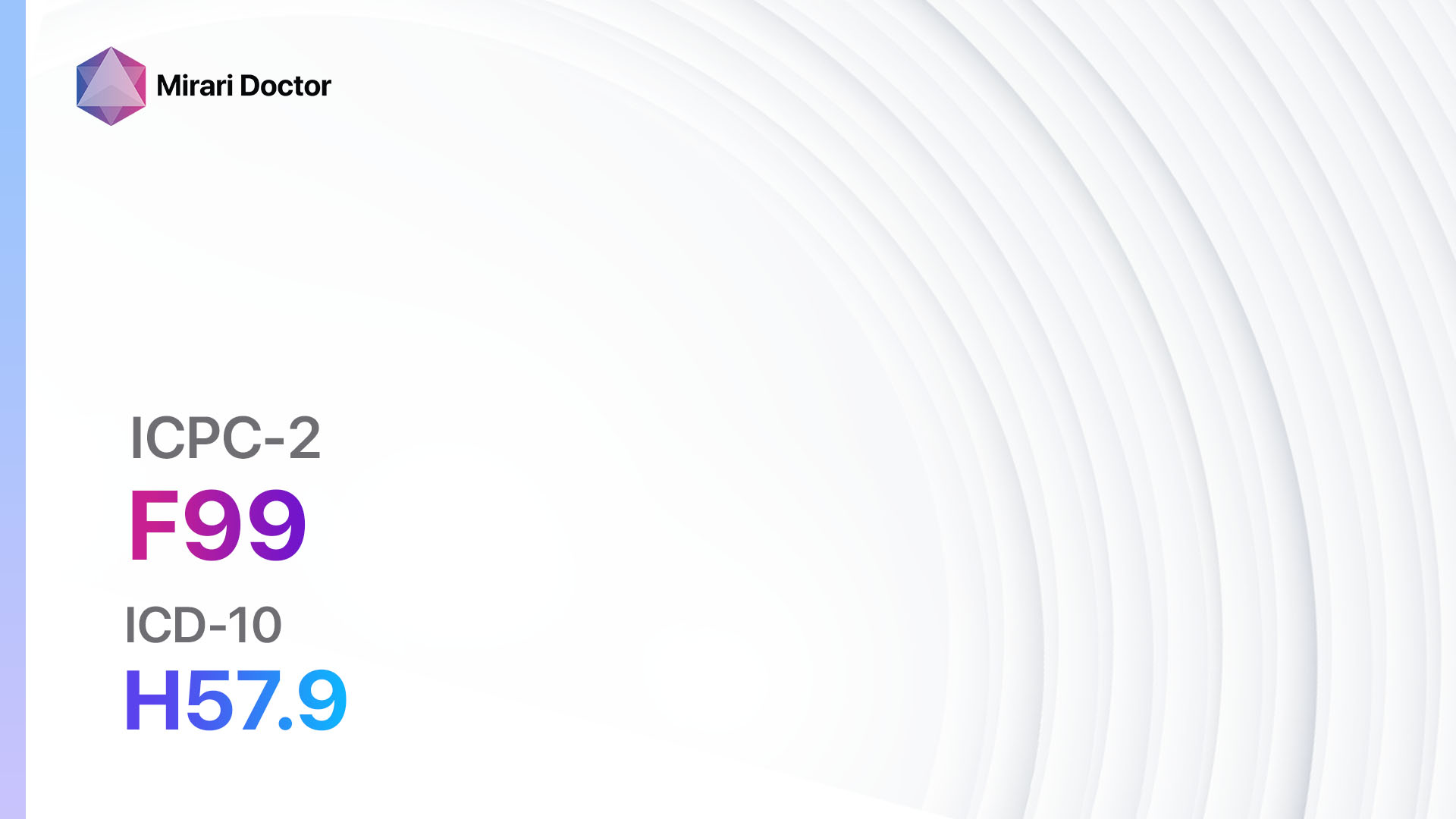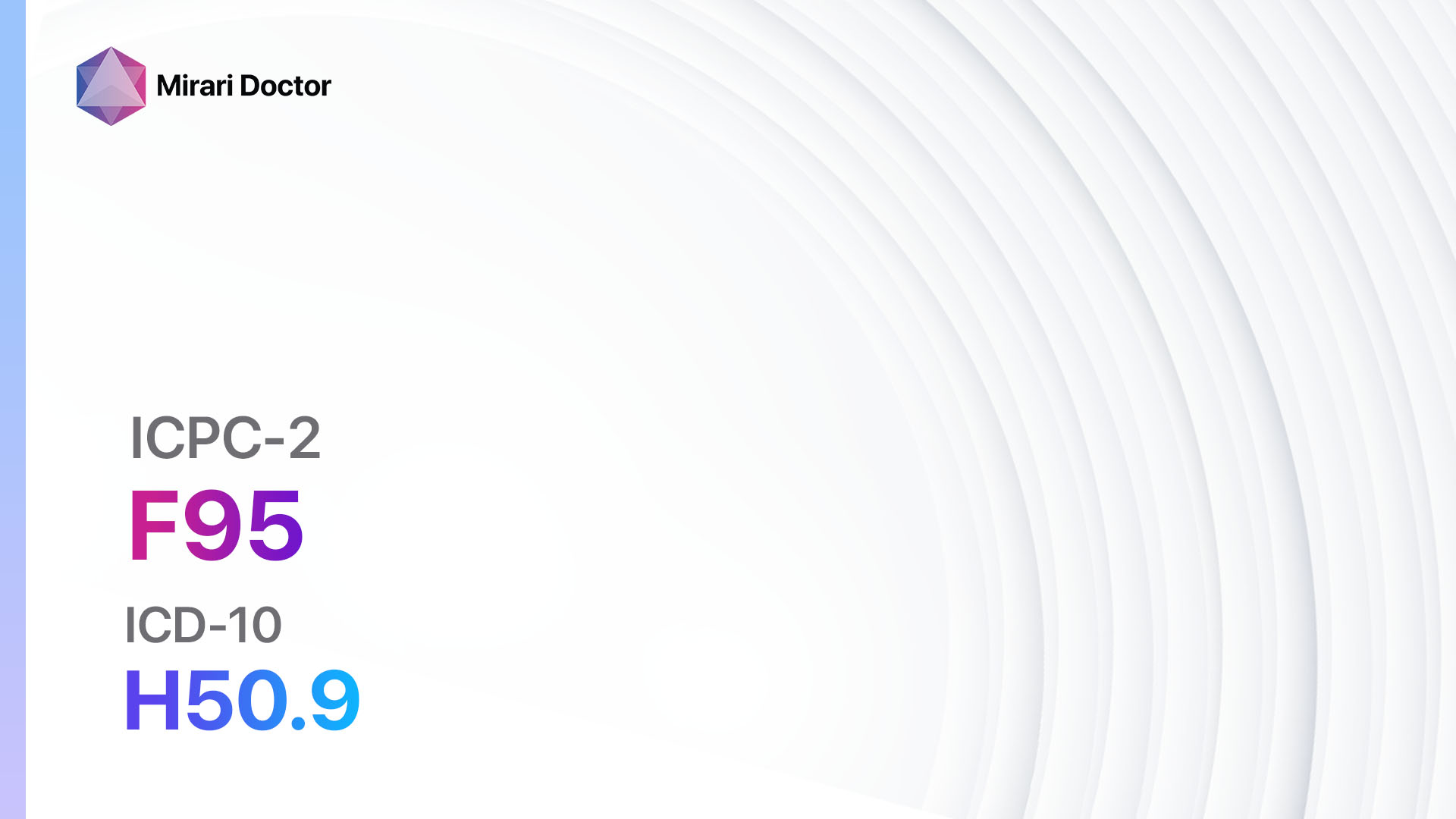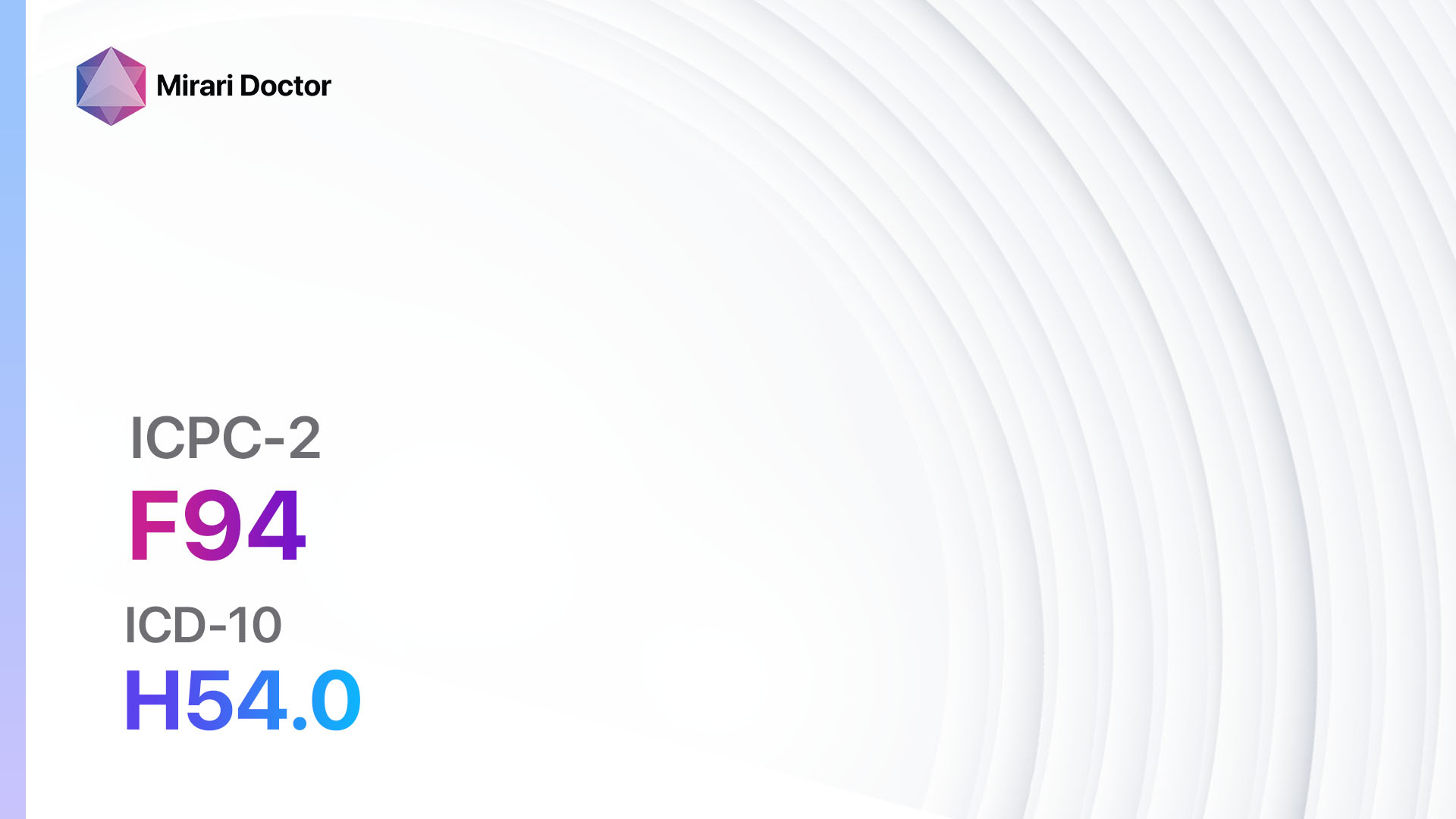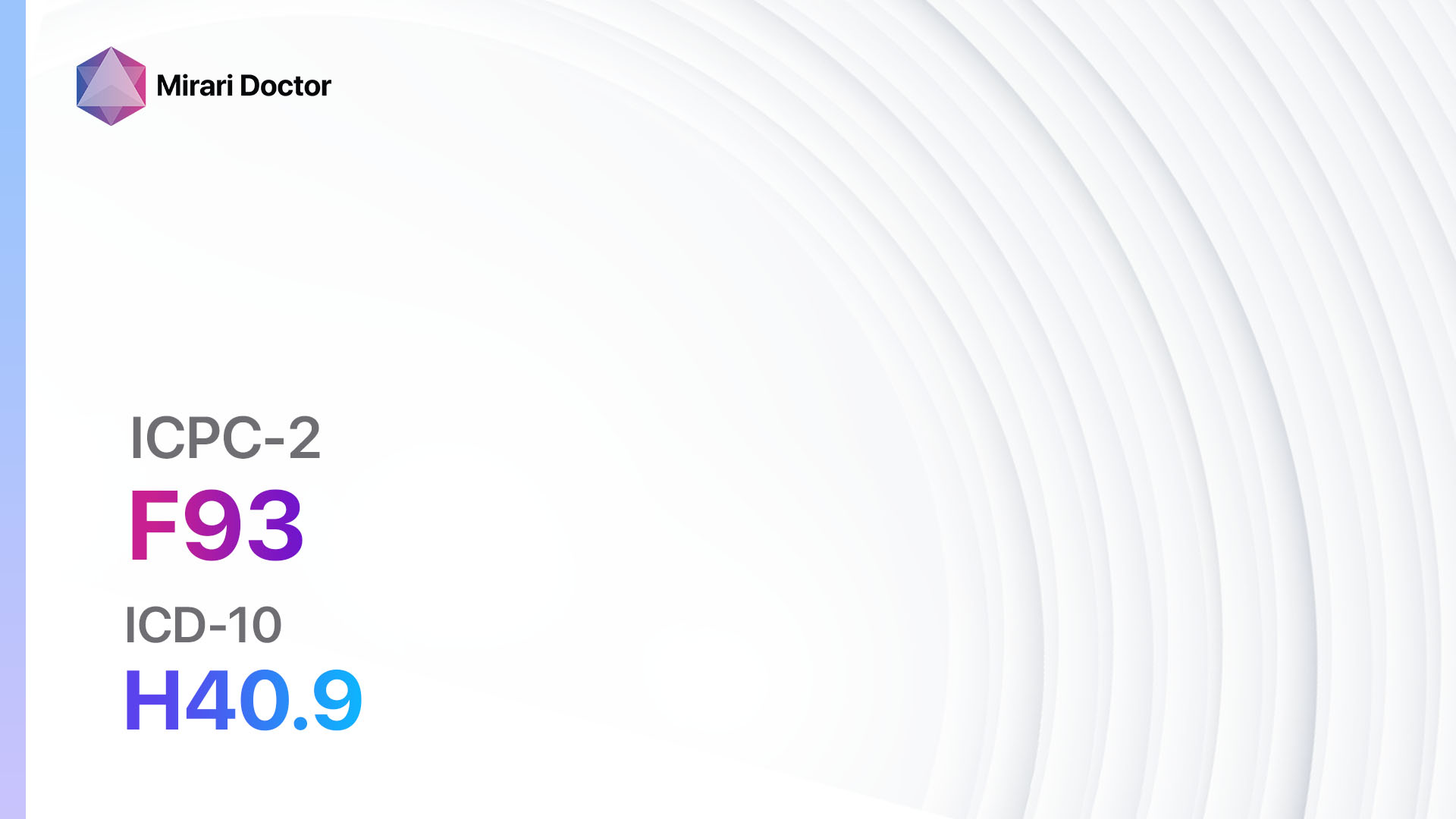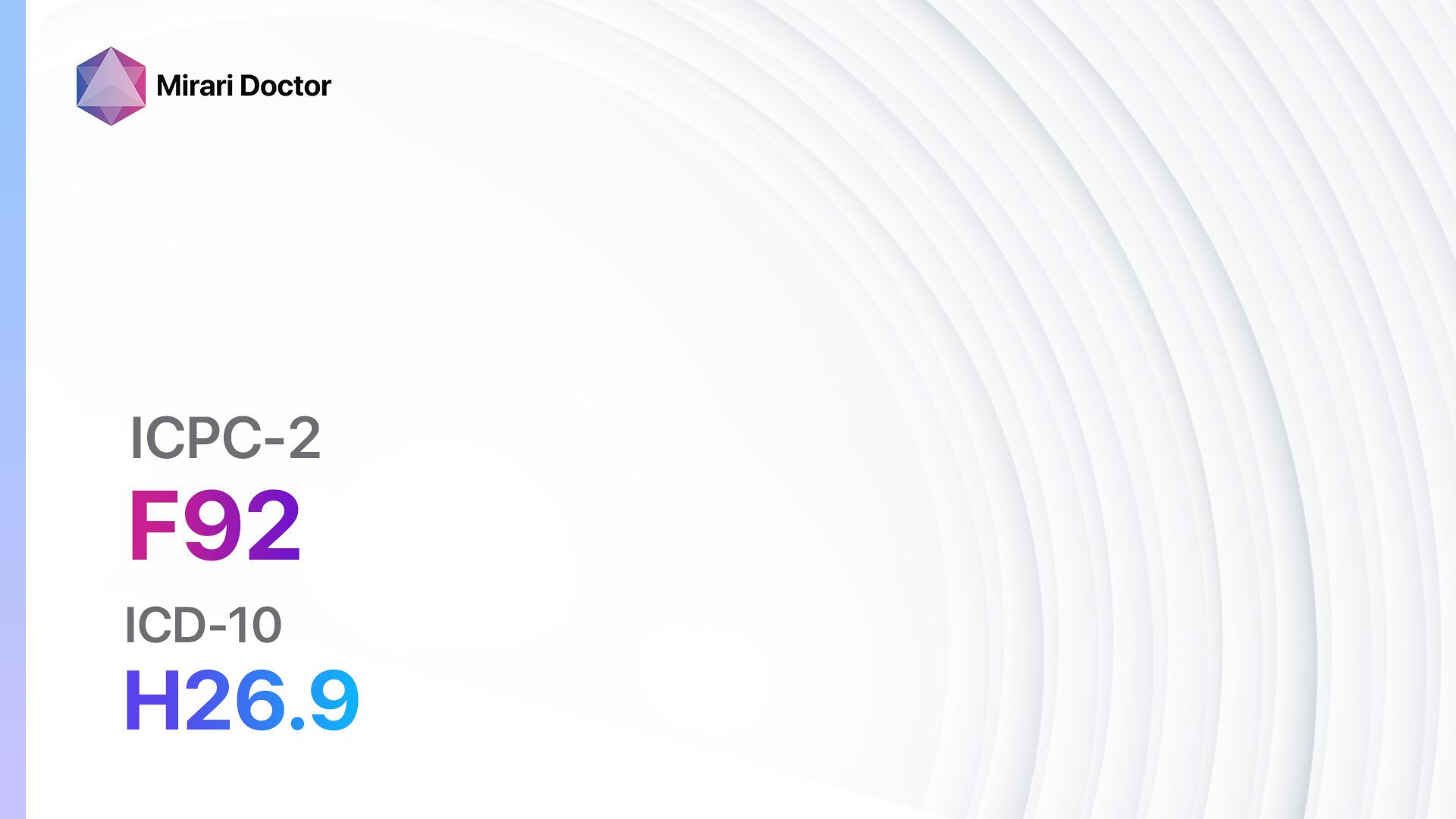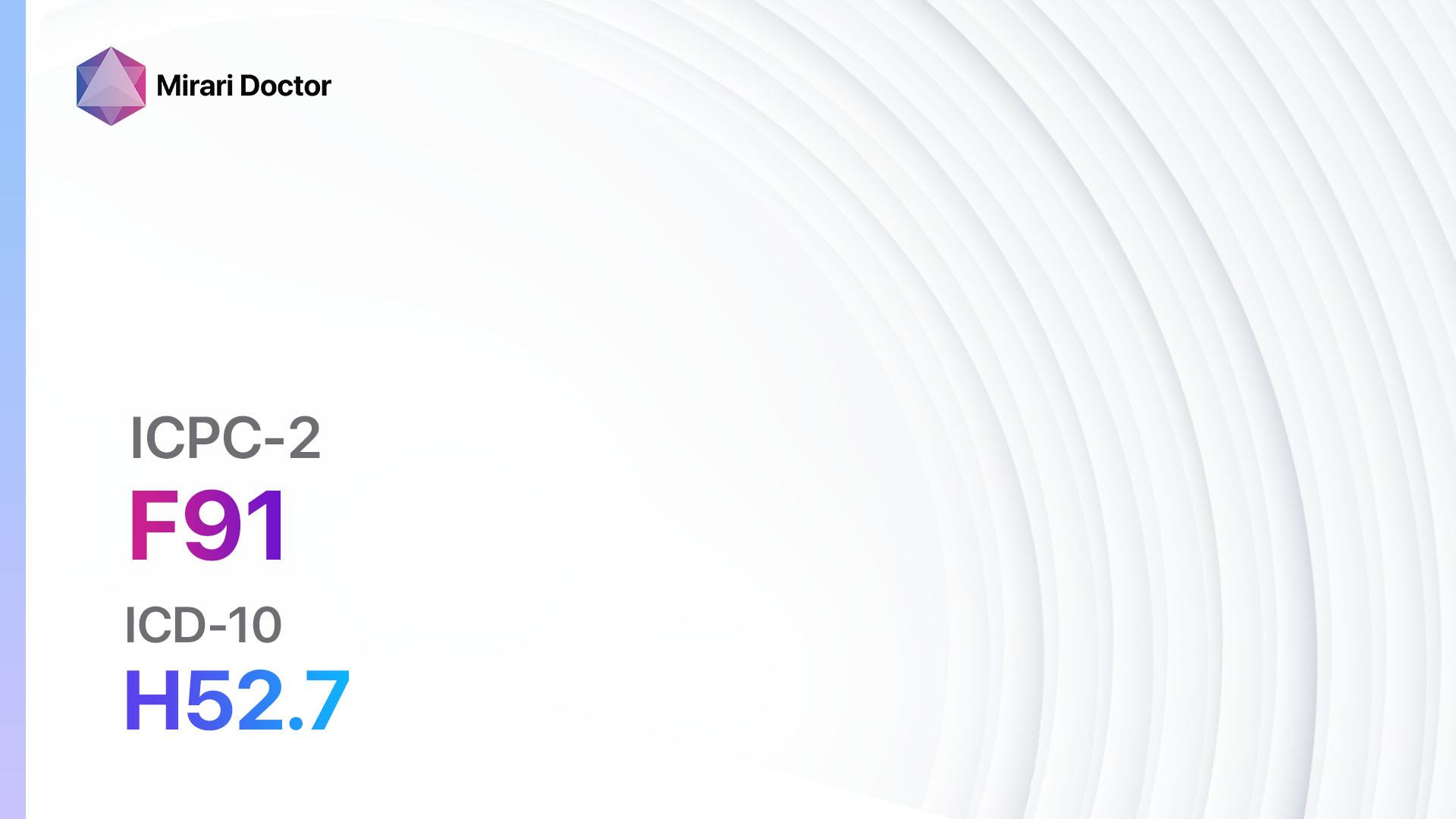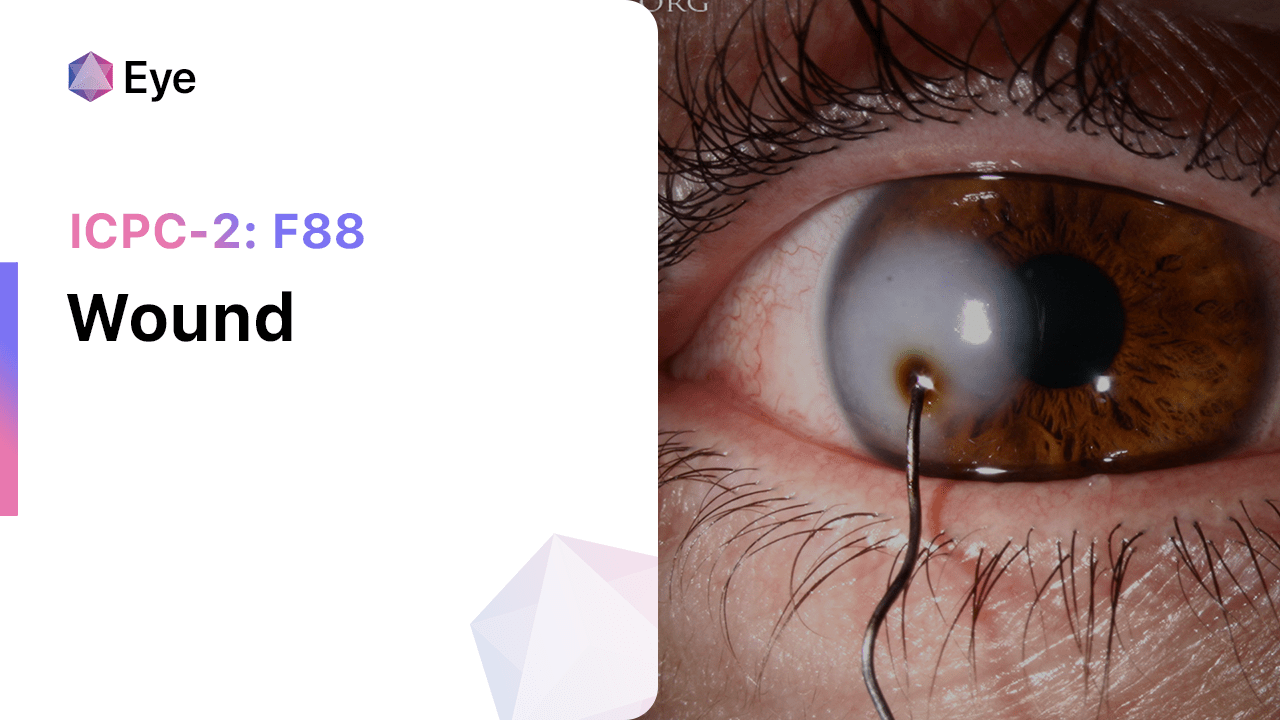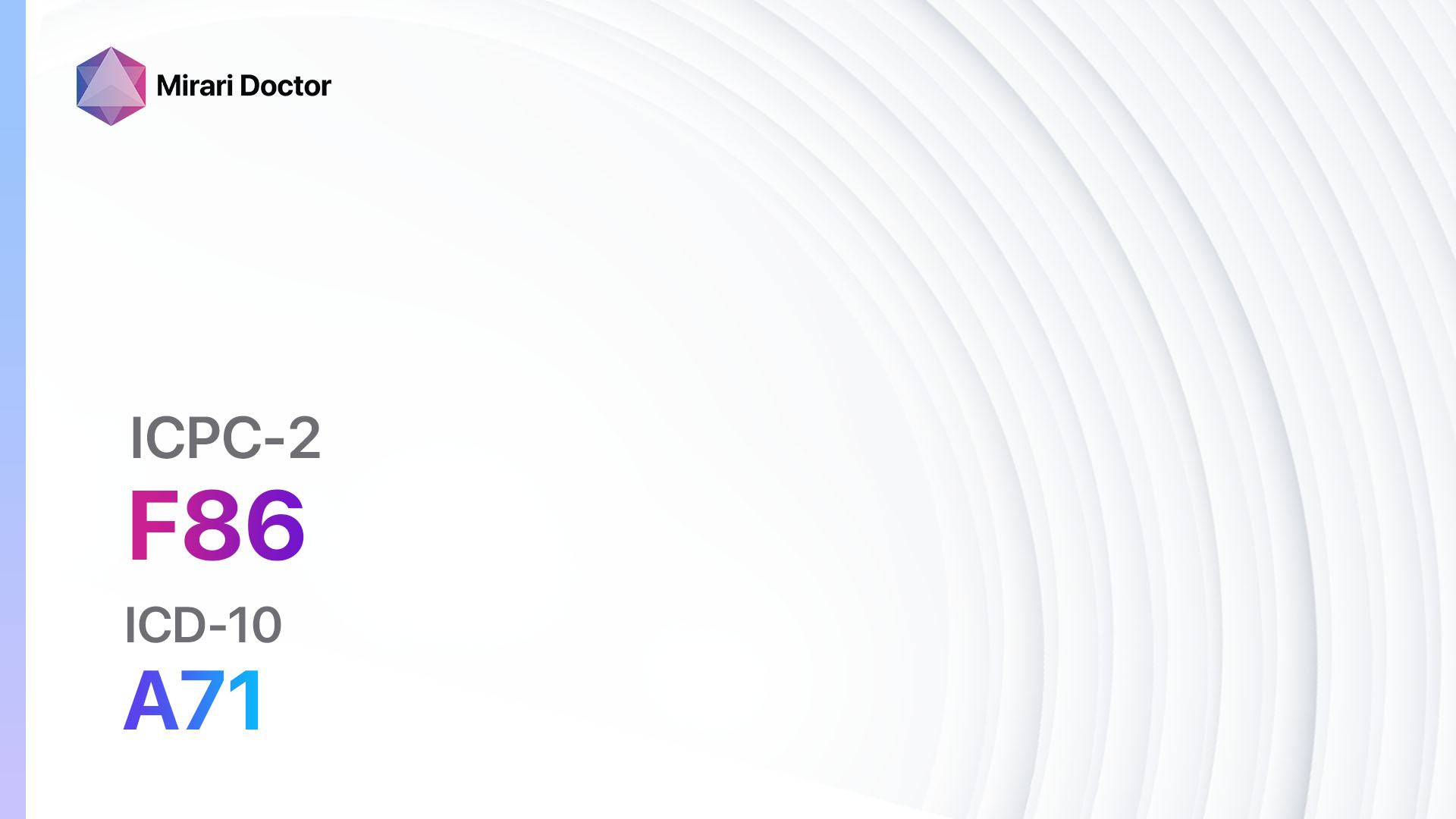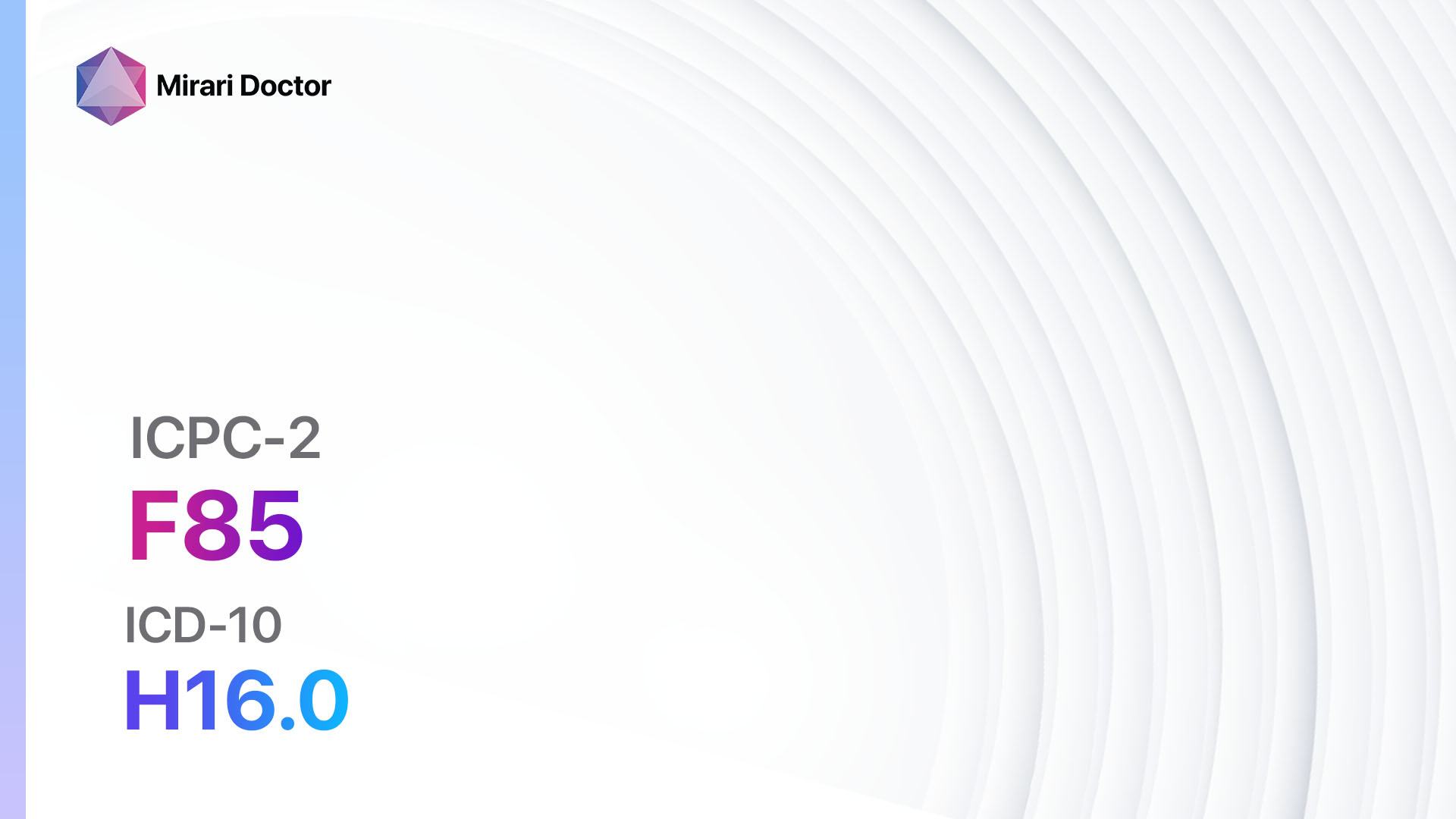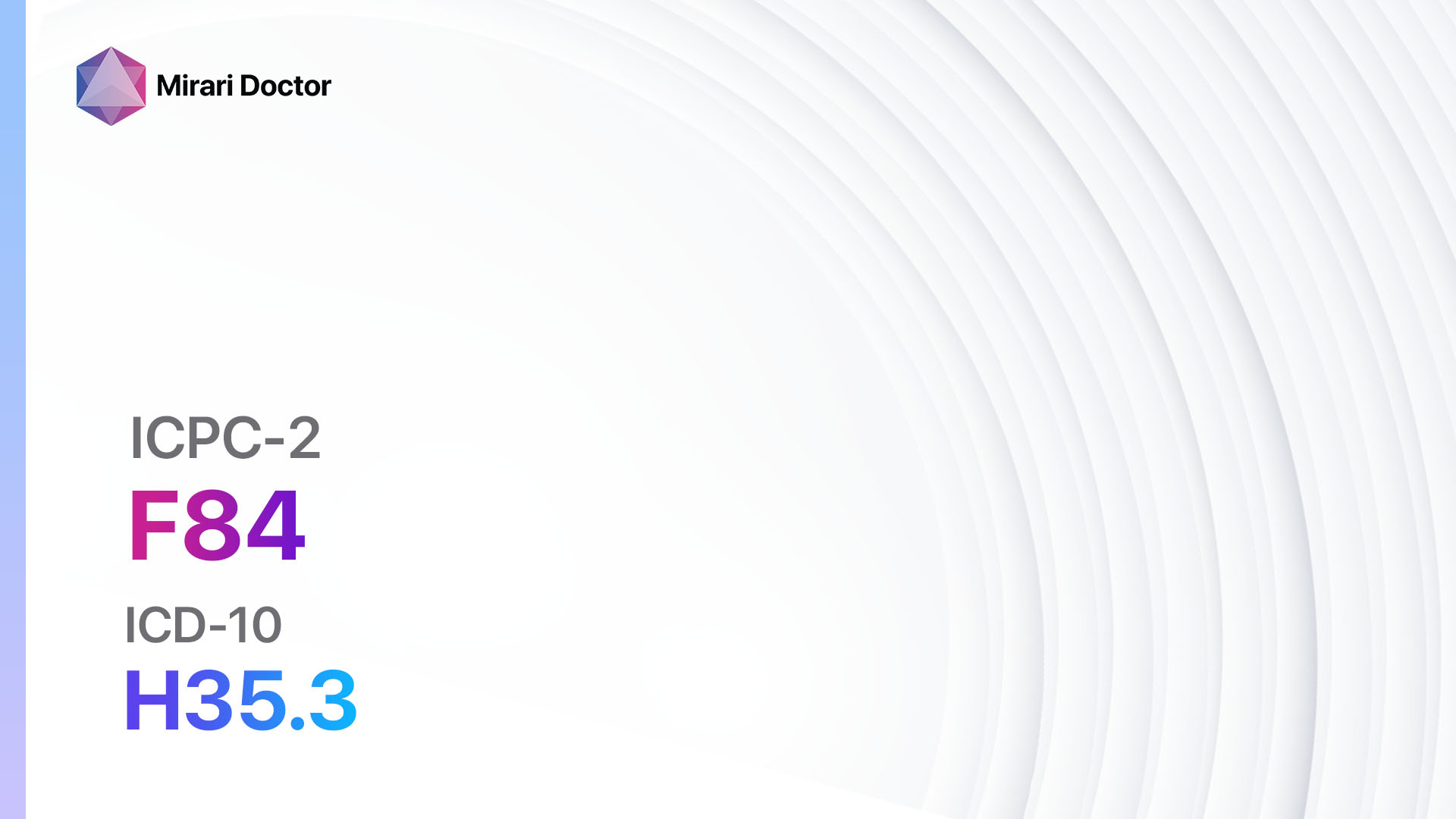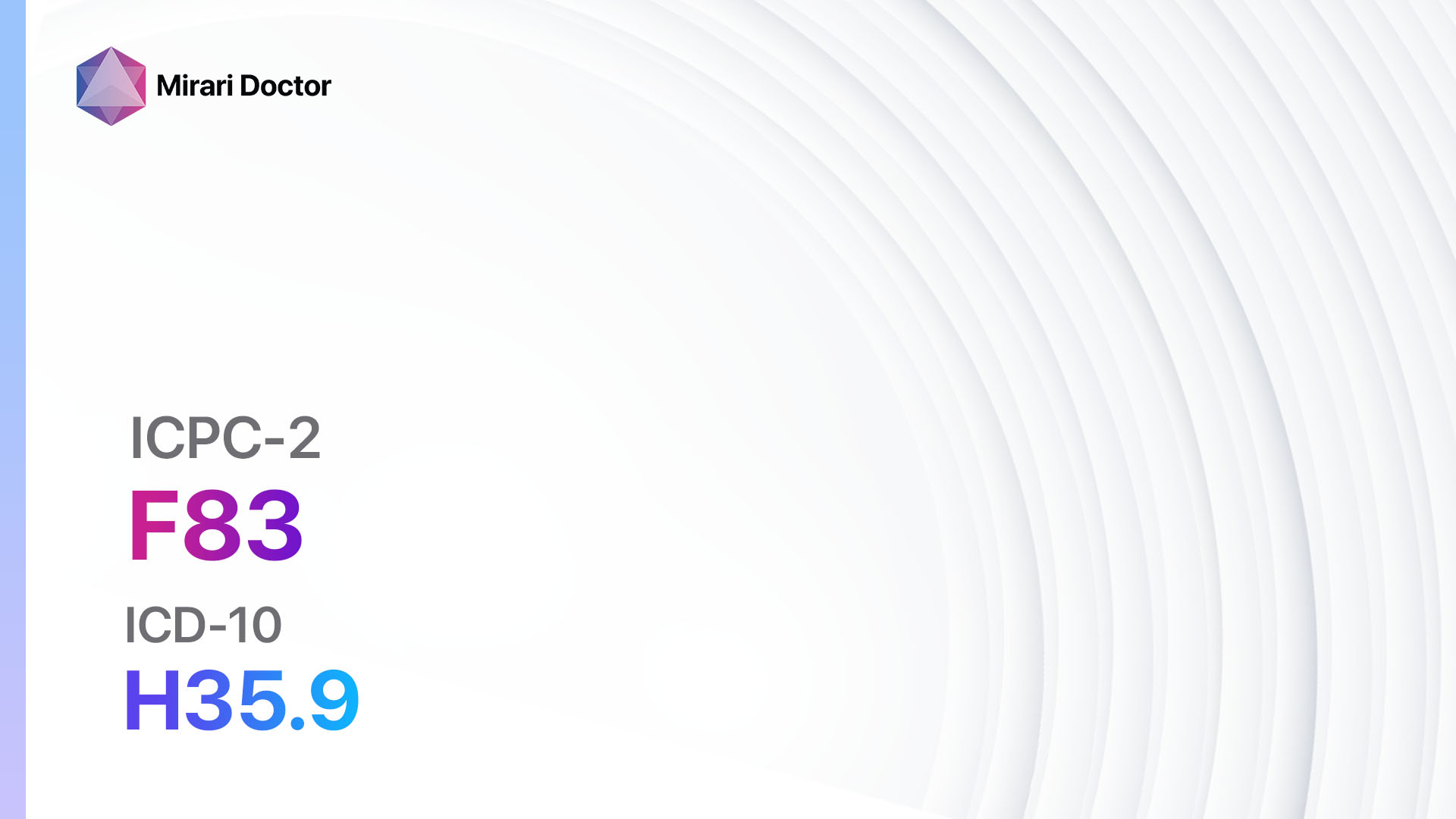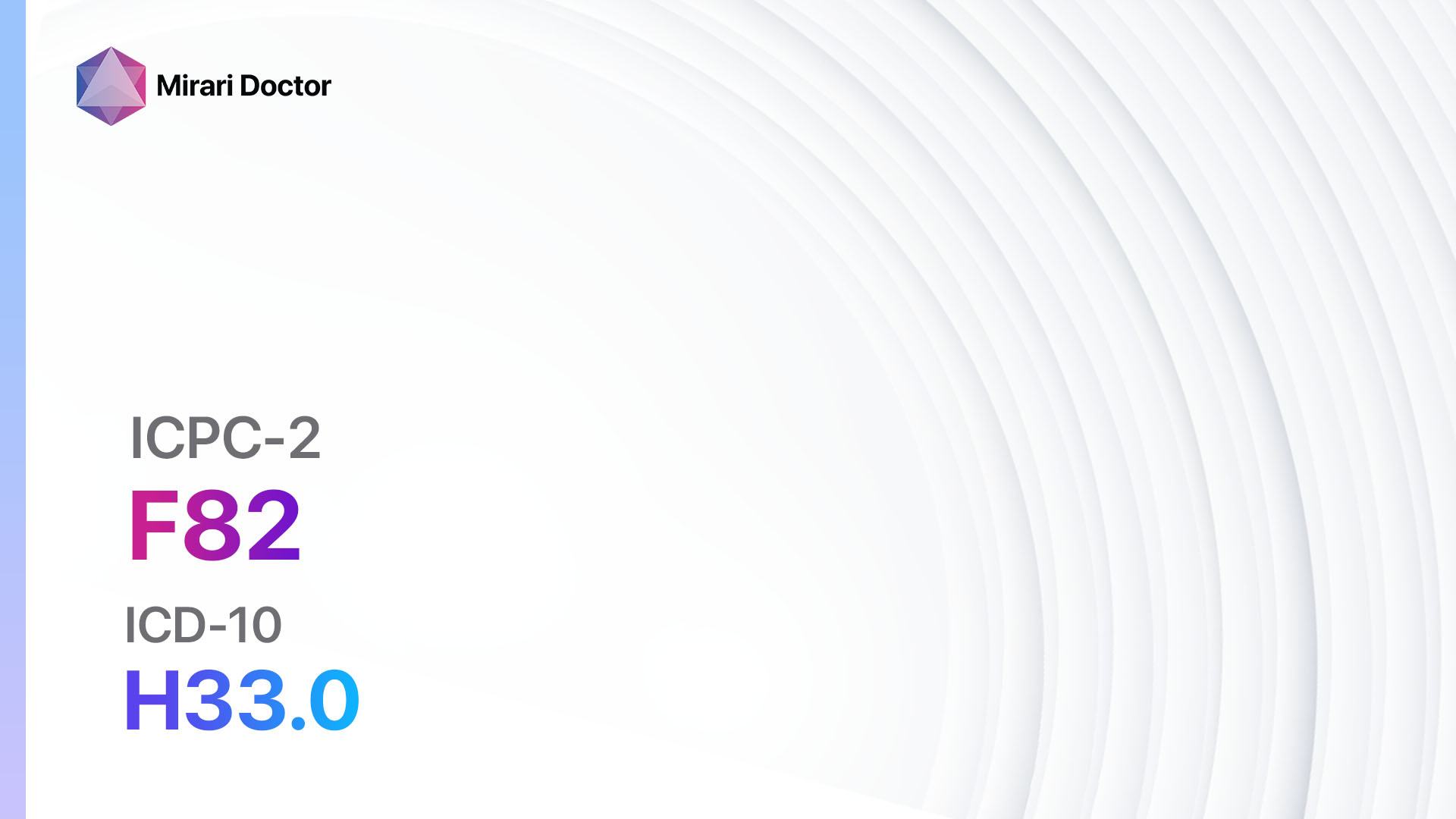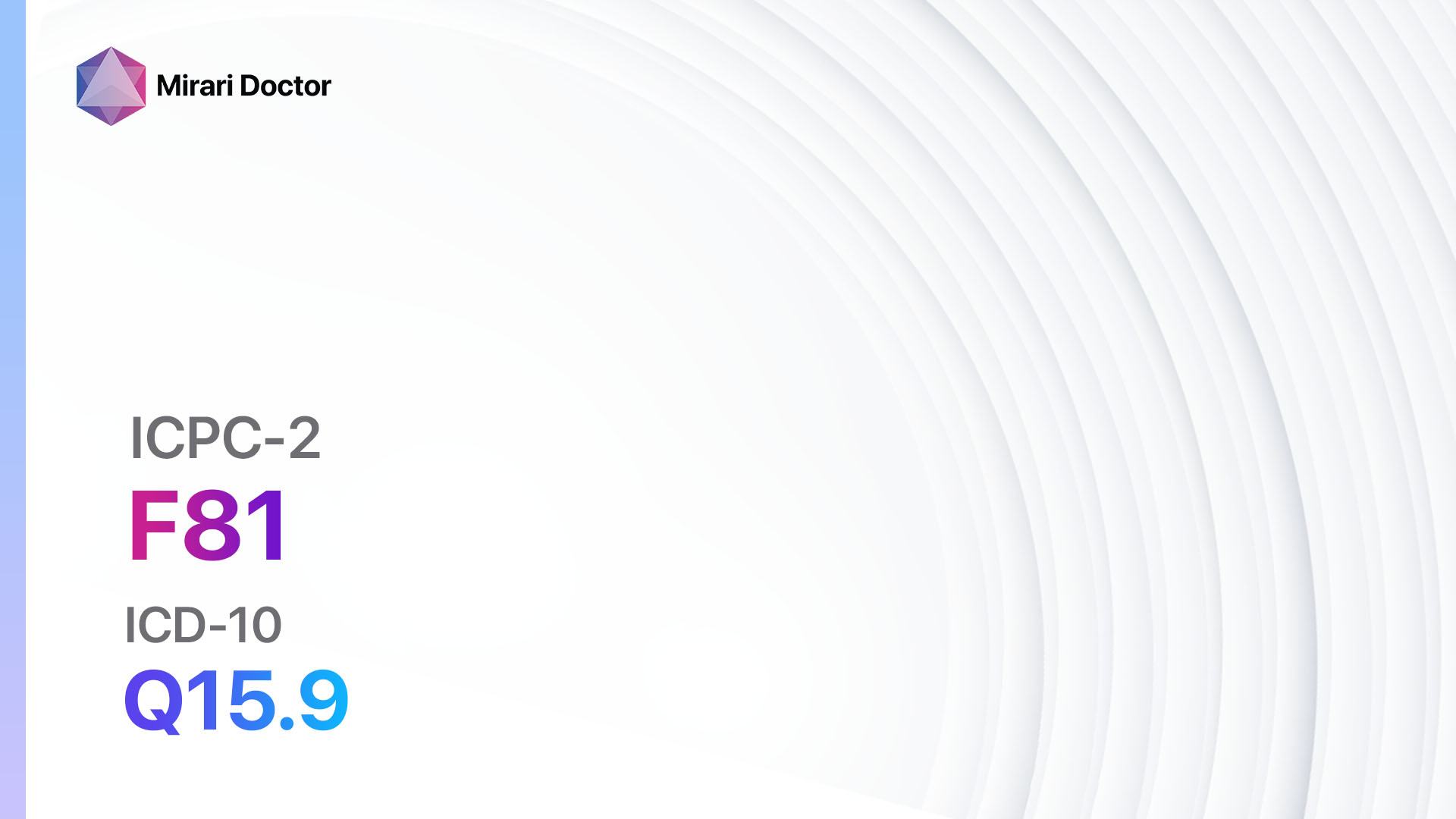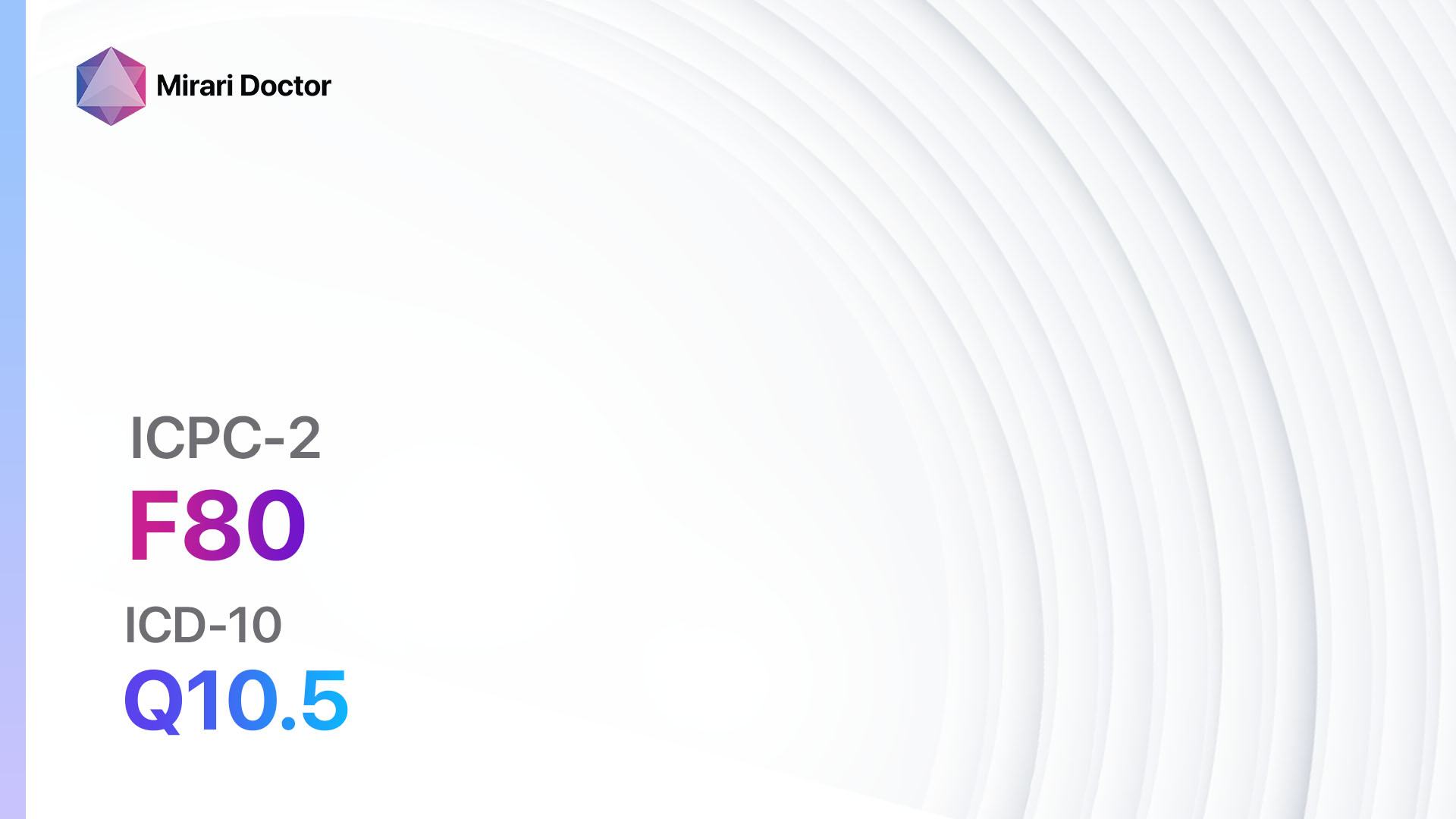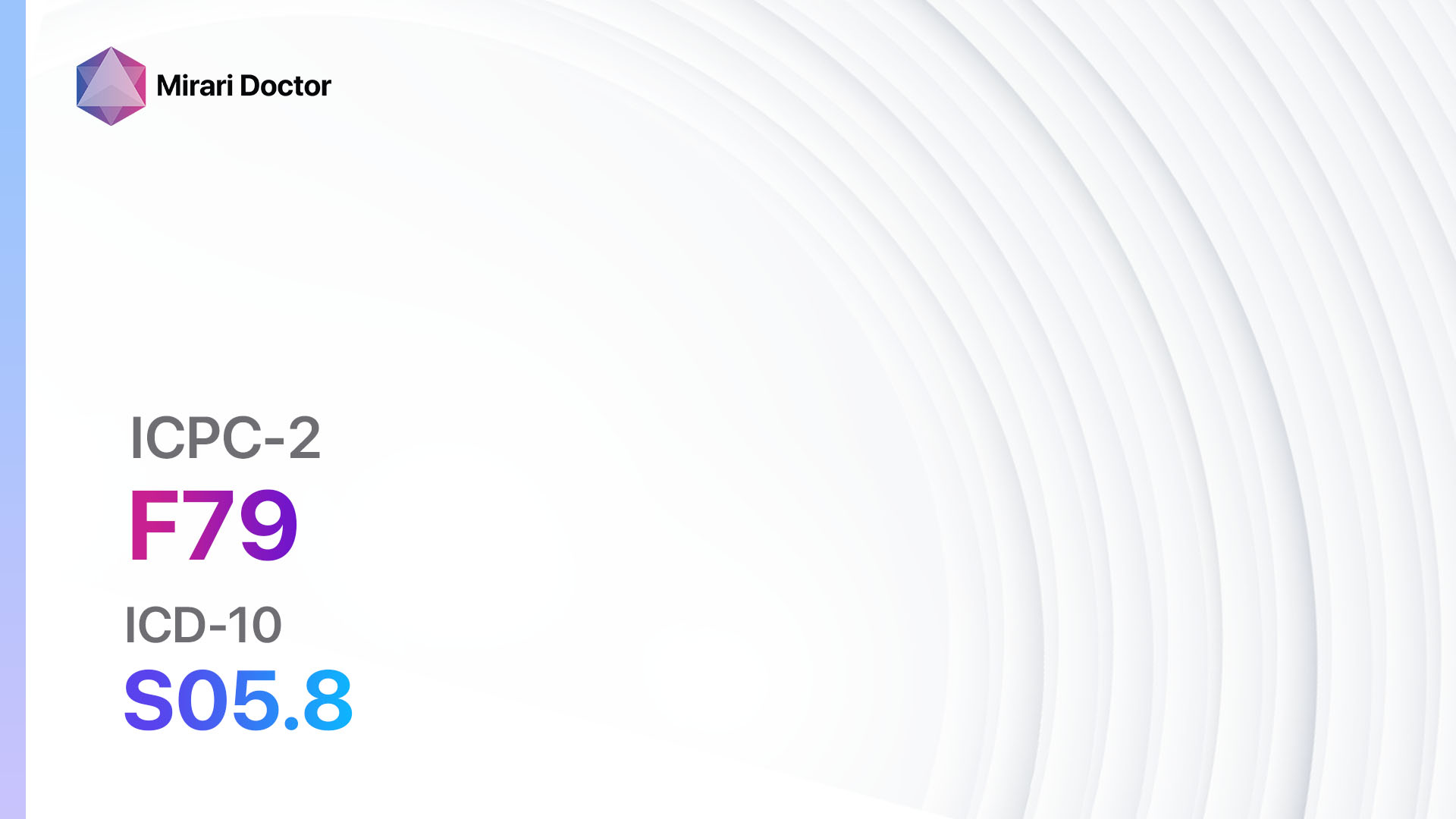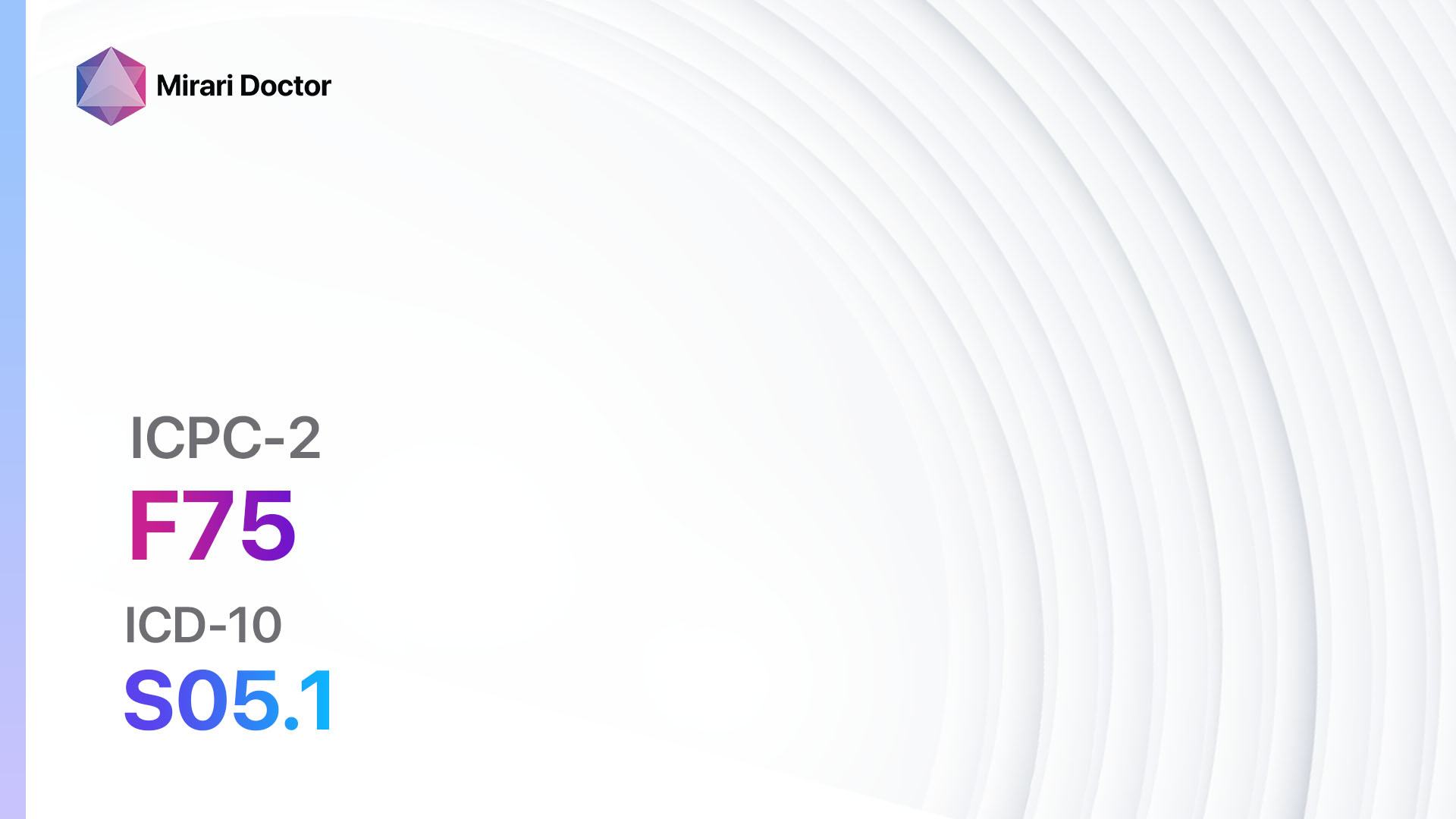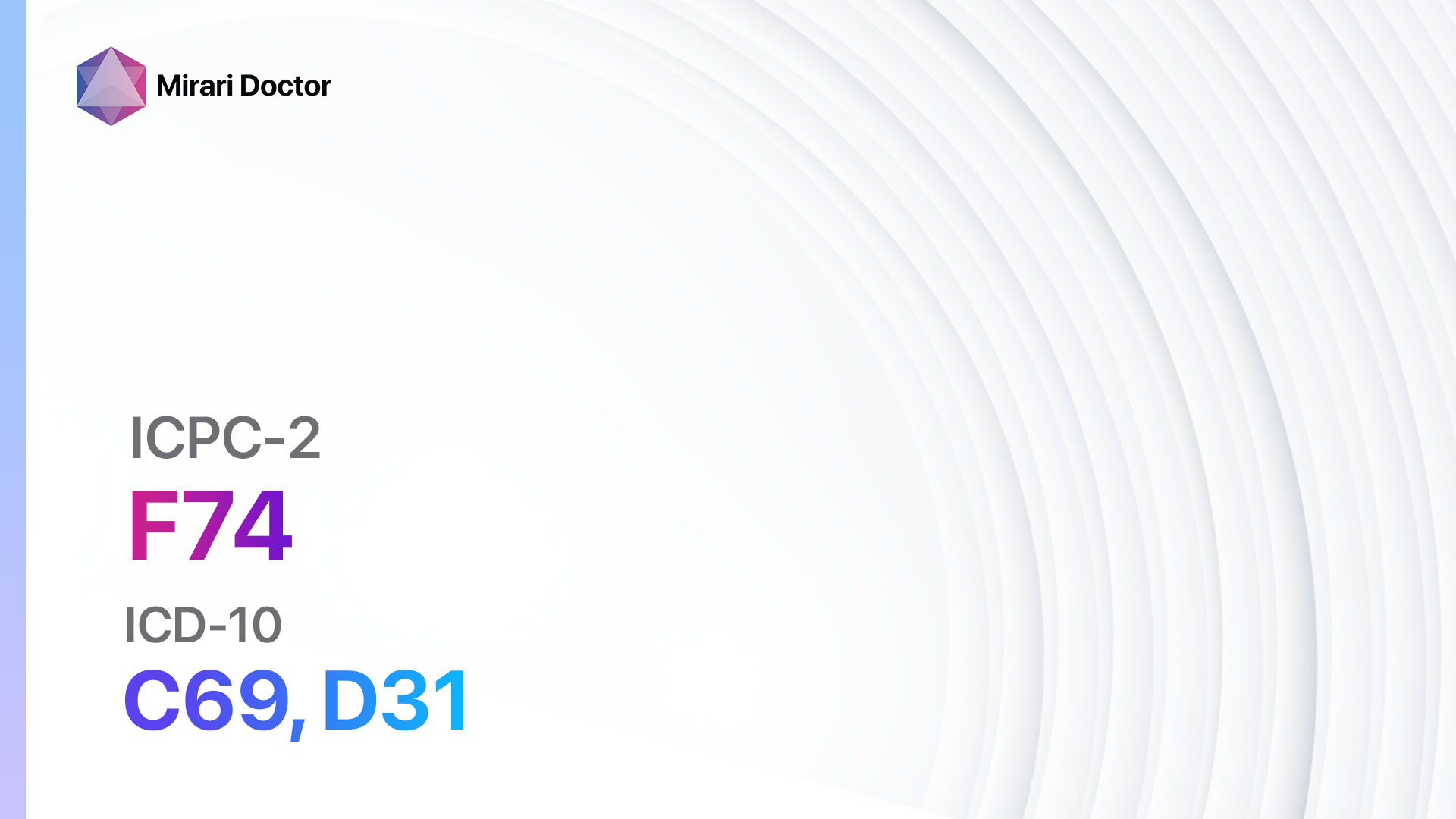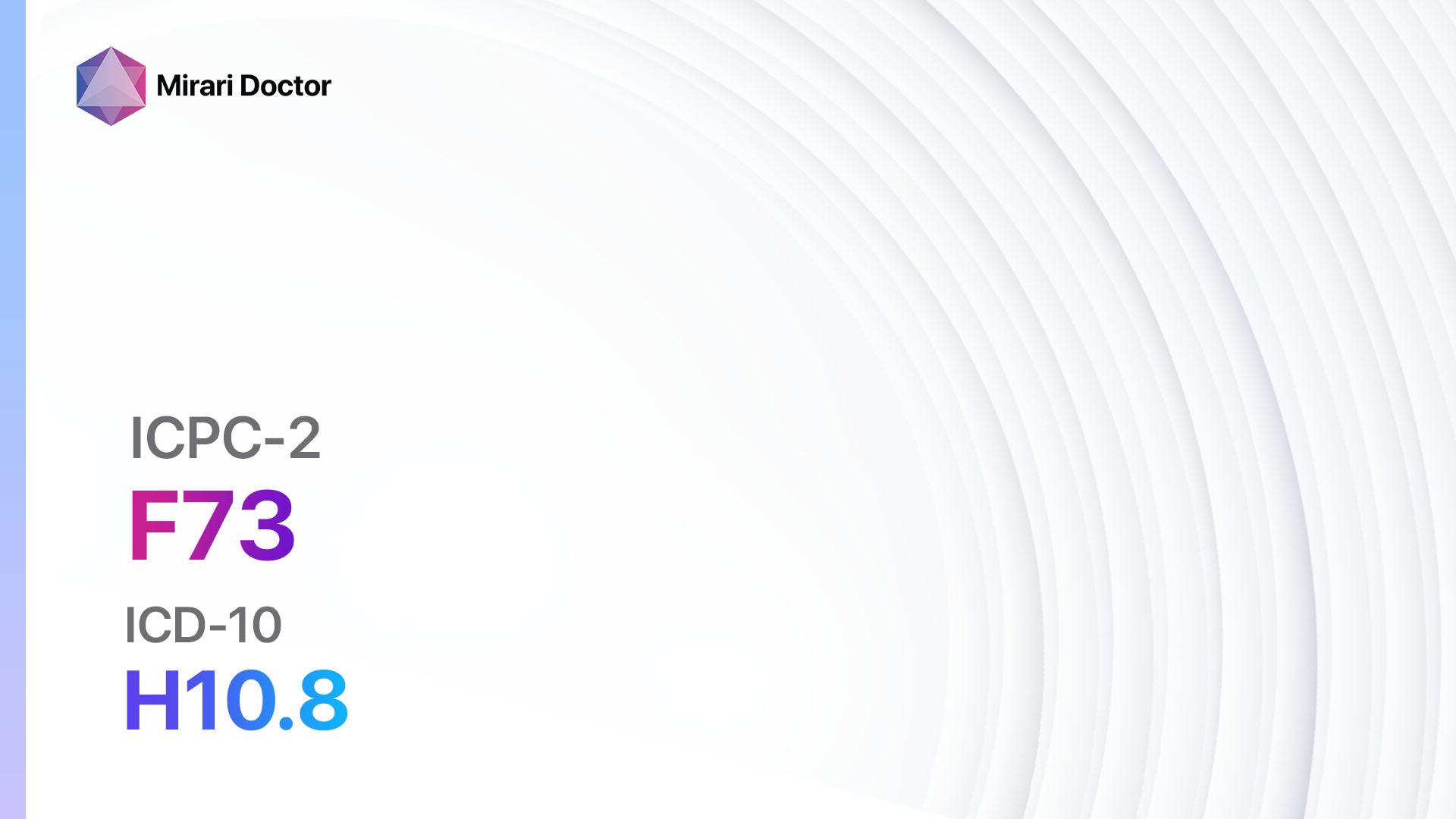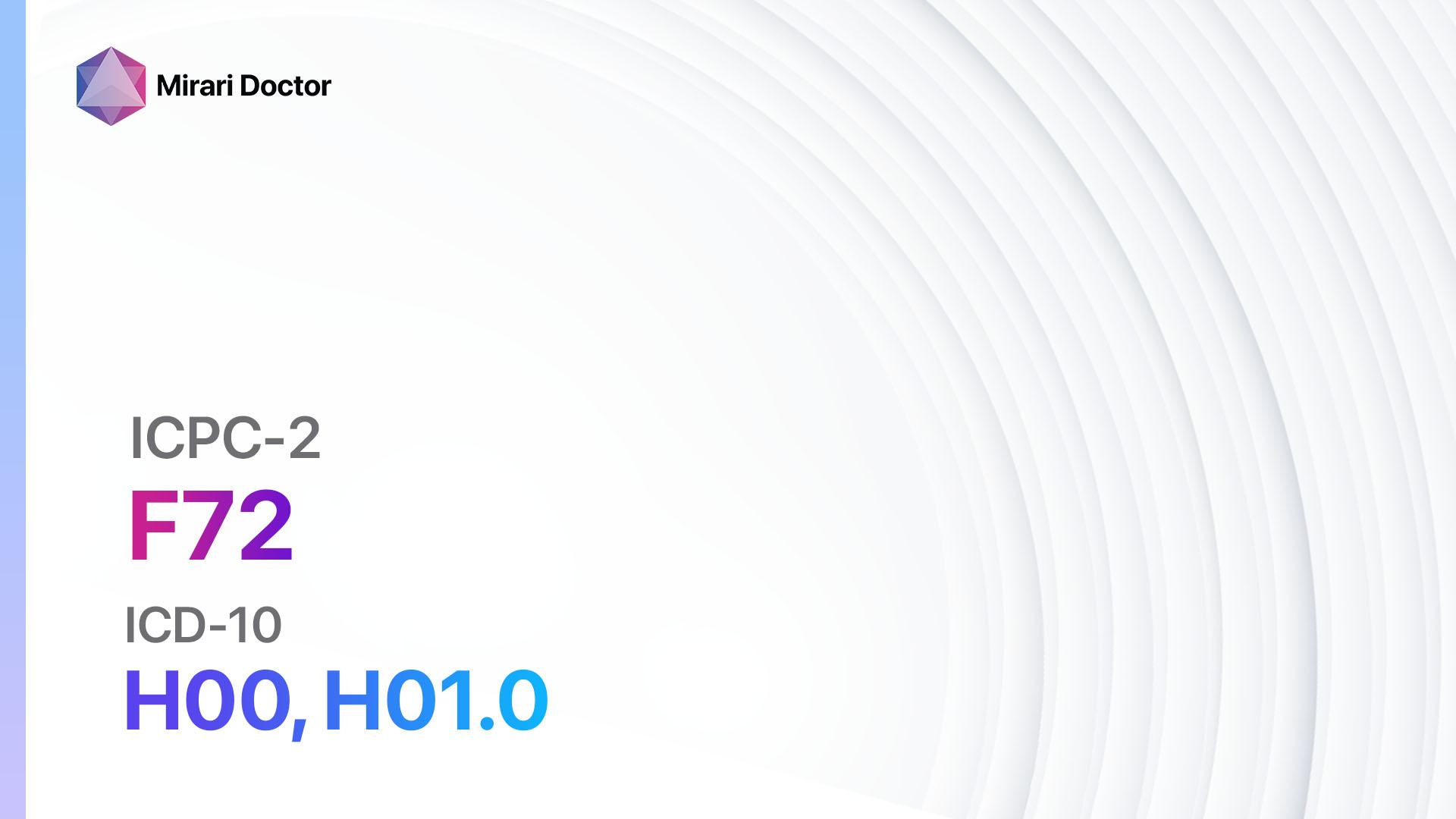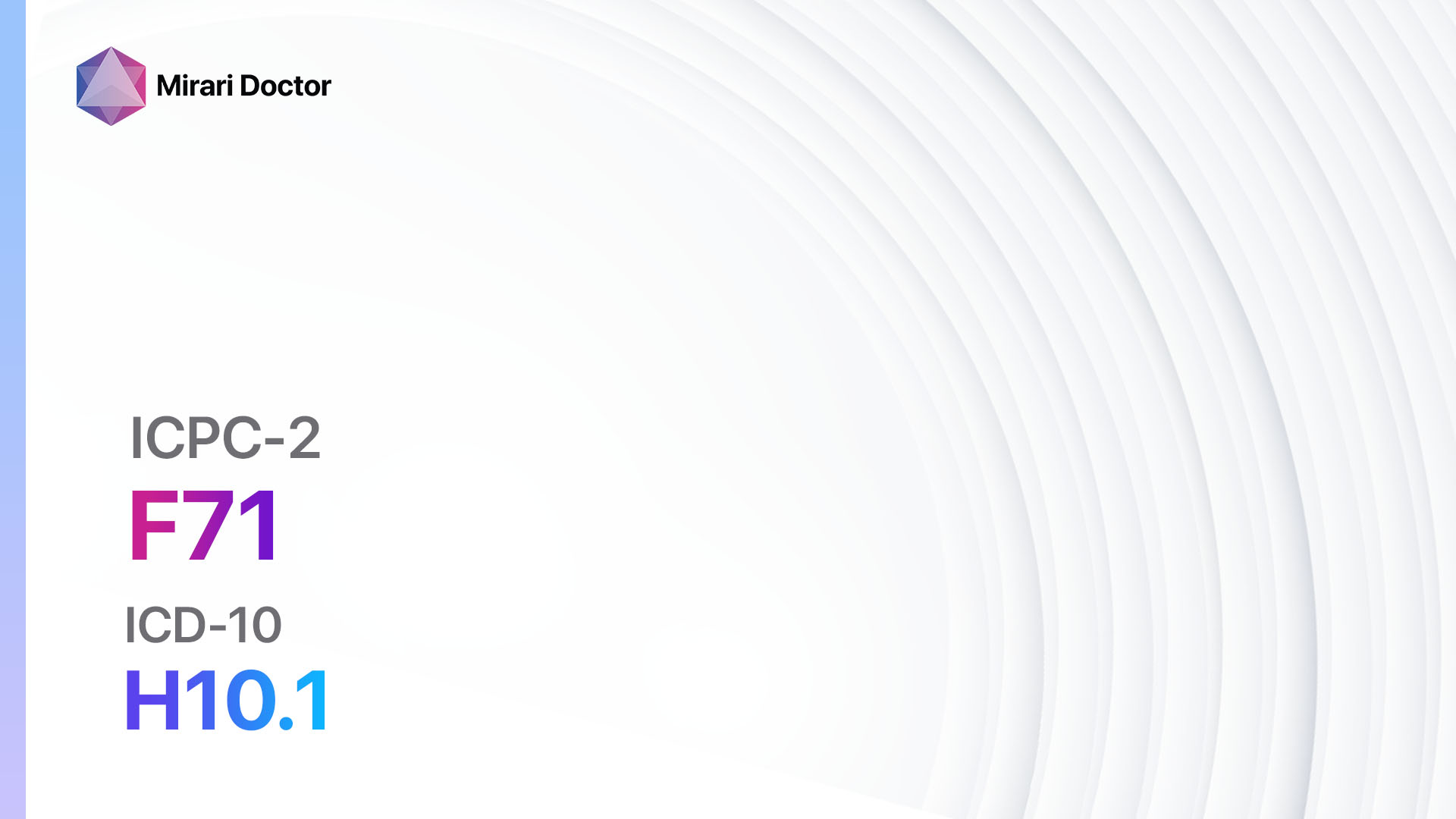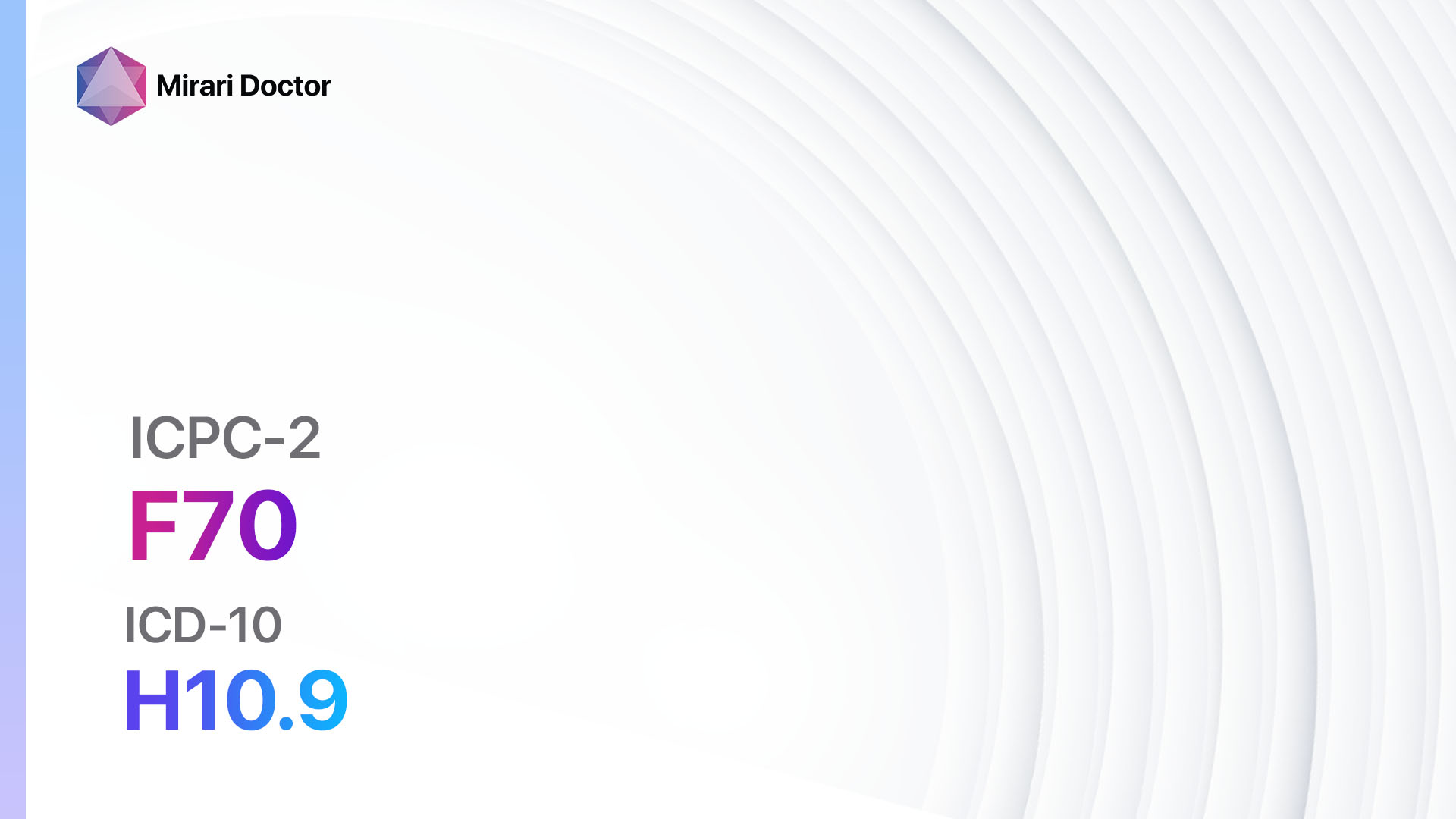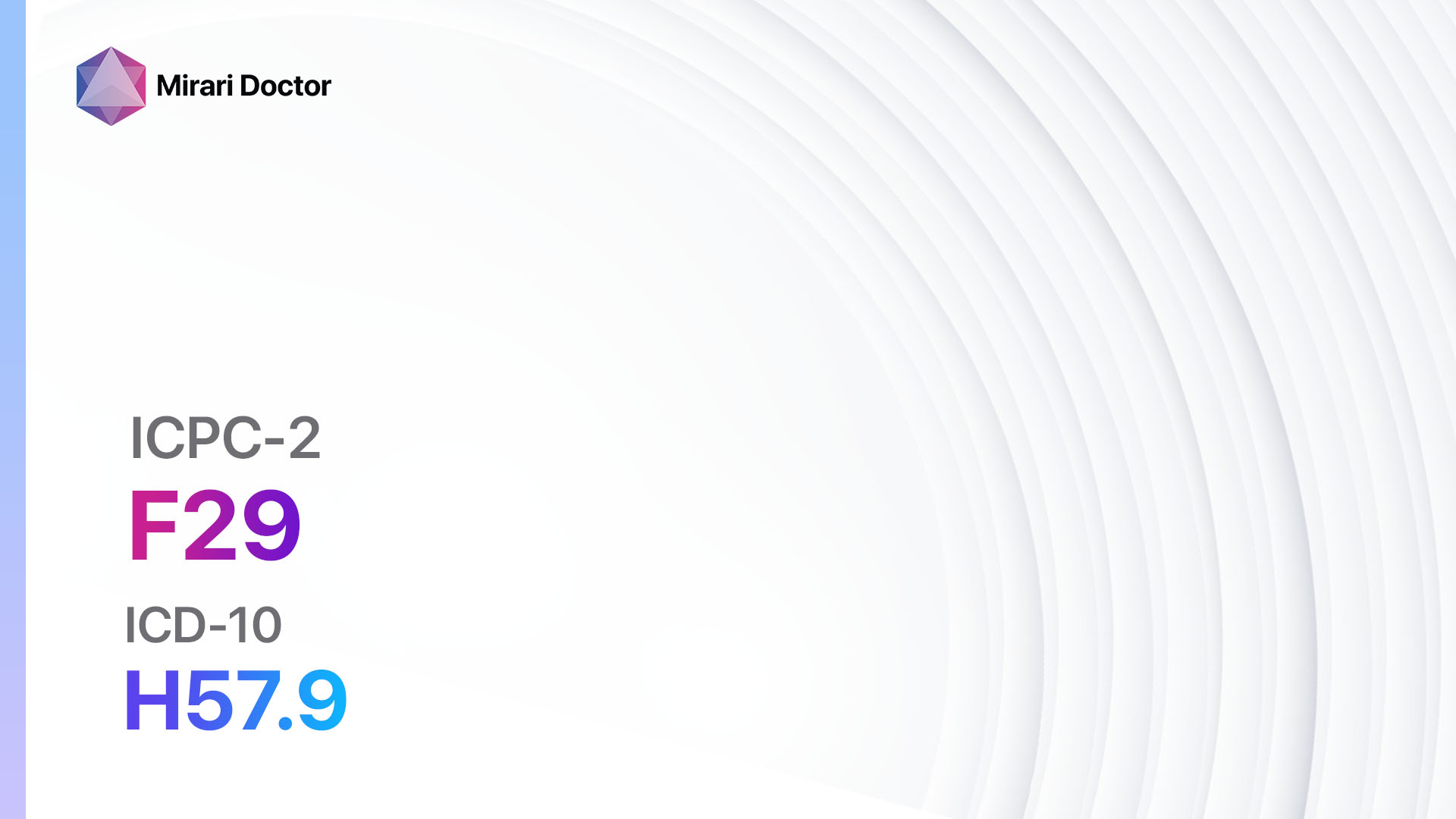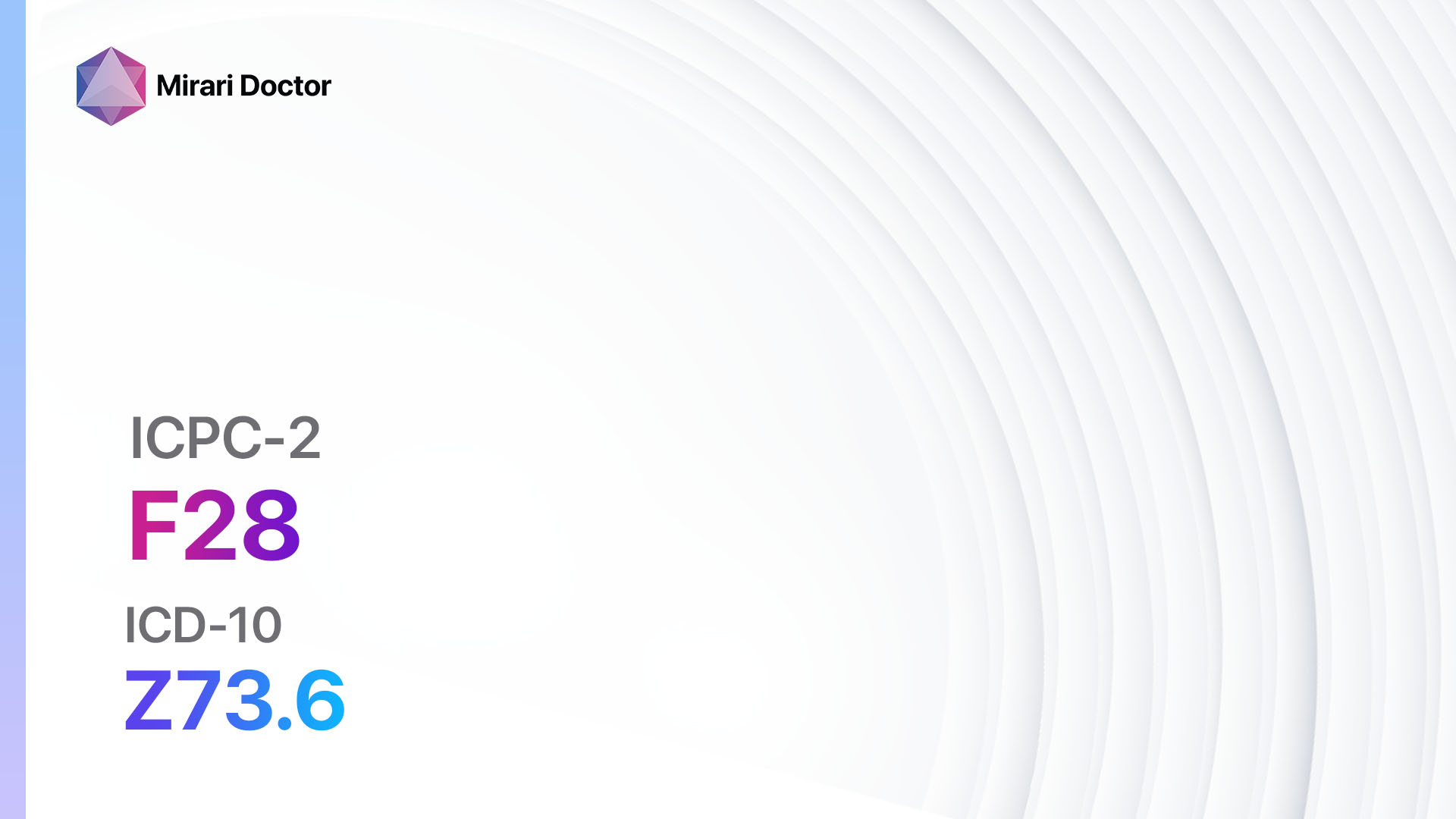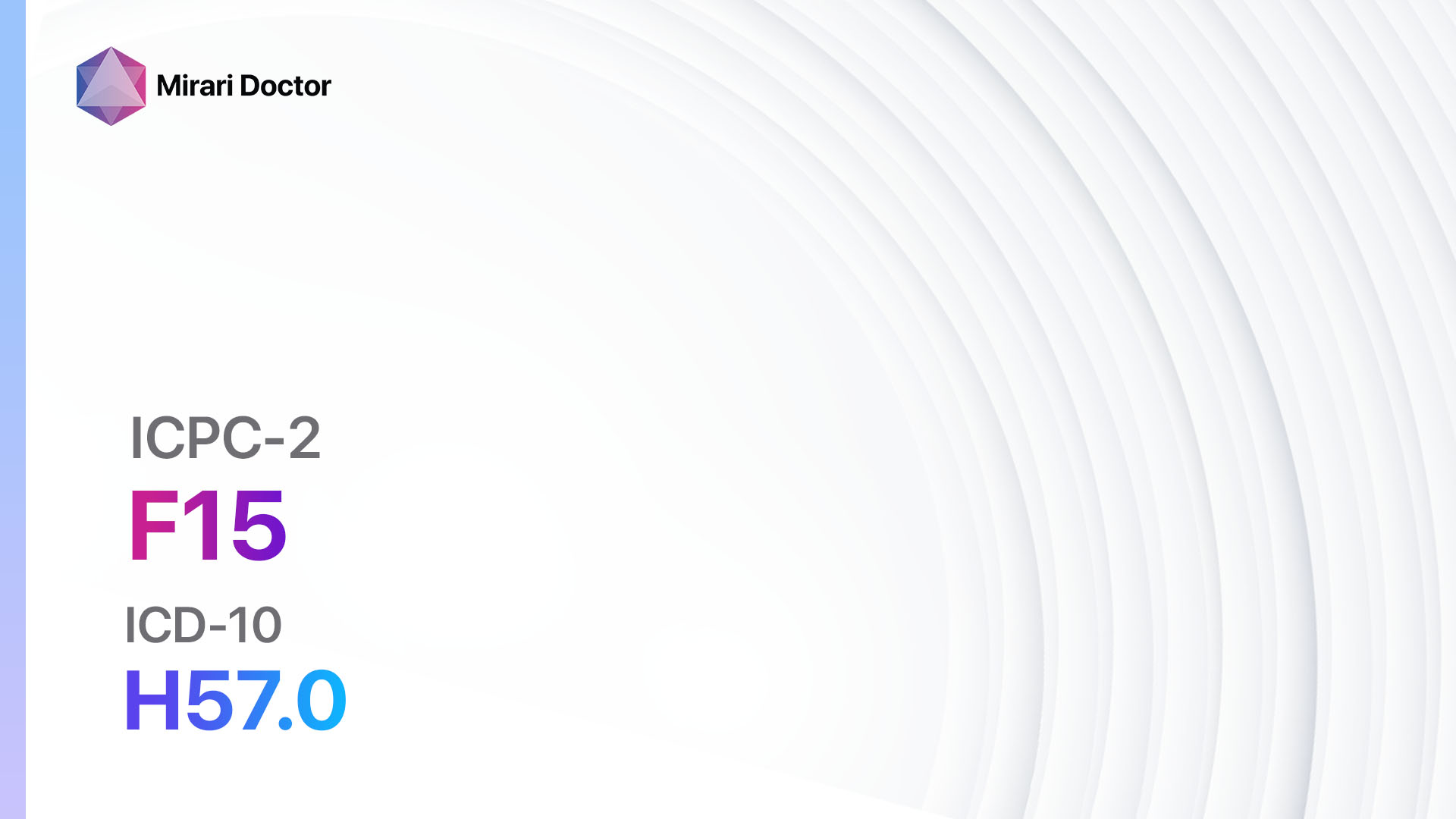
Introduction
Eye appearance abnormal refers to any visual changes or abnormalities in the appearance of the eye. It can be caused by various factors and may indicate an underlying eye condition or systemic disease.[1] This guide aims to provide a comprehensive overview of the symptoms, causes, diagnostic steps, possible interventions, and lifestyle interventions for eye appearance abnormal.
Codes
- ICPC-2 Code: F15 Eye appearance abnormal[2]
- ICD-10 Code: H57.8 Other specified disorders of eye and adnexa[3]
Symptoms
- Redness of the eye: The eye may appear red or bloodshot.[4]
- Swelling or puffiness: The eyelids or the area around the eye may be swollen or puffy.[5]
- Discharge: There may be a discharge from the eye, which can be watery, thick, or pus-like.[6]
- Itching or irritation: The eye may feel itchy or irritated.[7]
- Dryness: The eye may feel dry or gritty.[8]
- Blurred vision: Vision may be blurry or unclear.[9]
- Sensitivity to light: The eye may be sensitive to light, causing discomfort or pain.[10]
- Abnormal eye movements: The eye may exhibit abnormal movements or twitching.
Causes
- Allergies: Eye appearance abnormal can be caused by allergies, such as hay fever or allergic conjunctivitis.
- Infections: Bacterial or viral infections, such as conjunctivitis or keratitis, can lead to eye appearance abnormal.
- Dry eye syndrome: Insufficient tear production or poor tear quality can cause eye dryness and redness.
- Eye trauma: Injury or trauma to the eye can result in changes in eye appearance.
- Eye strain: Prolonged use of digital devices or reading in poor lighting conditions can cause eye strain and redness.
- Contact lens wear: Improper use or hygiene of contact lenses can lead to eye irritation and redness.
- Systemic diseases: Certain systemic conditions, such as autoimmune diseases or thyroid disorders, can affect the appearance of the eye.
Diagnostic Steps
Medical History
- Gather information about the patient’s symptoms, including the duration, severity, and any triggering factors.
- Inquire about any previous eye conditions, allergies, or systemic diseases.
- Ask about the patient’s occupation and daily activities that may contribute to eye strain or trauma.
- Determine if the patient wears contact lenses and assess their hygiene practices.
Physical Examination
- Inspect the external appearance of the eye, including the eyelids, conjunctiva, and surrounding tissues.
- Assess the eye for redness, swelling, discharge, or any abnormalities in shape or size.
- Evaluate visual acuity and perform a basic eye examination, including examination of the cornea, iris, and lens.
- Check for any abnormal eye movements or twitching.
Laboratory Tests
- Conjunctival swab: A swab of the conjunctiva may be taken to test for bacterial or viral infections.
- Tear film evaluation: Tear film tests, such as tear breakup time or Schirmer’s test, can assess tear production and quality.
- Allergy testing: Skin prick tests or blood tests may be performed to identify specific allergens causing eye allergies.
Diagnostic Imaging
- Slit-lamp examination: A specialized microscope called a slit lamp is used to examine the structures of the eye in detail.
- Fundus examination: The back of the eye, including the retina and optic nerve, can be visualized using an ophthalmoscope.
- Optical coherence tomography (OCT): This imaging technique provides cross-sectional images of the eye, helping to assess the retina and optic nerve.
Other Tests
- Visual field testing: This test measures the extent and quality of a patient’s peripheral vision.
- Intraocular pressure measurement: Elevated intraocular pressure may indicate glaucoma and can be measured using tonometry.
- Refraction test: This test determines the patient’s prescription for glasses or contact lenses.
Follow-up and Patient Education
- Schedule a follow-up appointment to monitor the patient’s progress and response to treatment.
- Provide education on proper eye hygiene, including contact lens care and prevention of eye strain.
- Advise the patient to seek medical attention if symptoms worsen or if new symptoms develop.
Possible Interventions
Traditional Interventions
Medications:
Top 5 drugs for eye appearance abnormal:
- Artificial tears:
- Cost: $5-$15 per bottle.
- Contraindications: None.
- Side effects: None.
- Severe side effects: None.
- Drug interactions: None.
- Warning: Use as directed.
- Antihistamine eye drops (e.g., Ketotifen):
- Cost: $10-$20 per bottle.
- Contraindications: None.
- Side effects: Mild burning or stinging.
- Severe side effects: None.
- Drug interactions: None.
- Warning: Use as directed.
- Antibiotic eye drops (e.g., Tobramycin):
- Cost: $10-$30 per bottle.
- Contraindications: Hypersensitivity to aminoglycosides.
- Side effects: Mild burning or stinging.
- Severe side effects: Allergic reactions.
- Drug interactions: None.
- Warning: Use as directed and complete the full course of treatment.
- Corticosteroid eye drops (e.g., Prednisolone):
- Cost: $10-$30 per bottle.
- Contraindications: Fungal or viral eye infections.
- Side effects: Increased intraocular pressure, cataract formation.
- Severe side effects: None with short-term use.
- Drug interactions: None.
- Warning: Use as directed and do not use for prolonged periods without medical supervision.
- Mast cell stabilizers (e.g., Cromolyn sodium):
- Cost: $10-$20 per bottle.
- Contraindications: None.
- Side effects: Mild burning or stinging.
- Severe side effects: None.
- Drug interactions: None.
- Warning: Use as directed.
Alternative Drugs:
- Nonsteroidal anti-inflammatory drugs (NSAIDs) (e.g., Ketorolac): Used for pain relief and inflammation reduction.
- Vasoconstrictors (e.g., Naphazoline): Temporarily reduce redness and swelling of the eye.
- Antiviral eye drops (e.g., Ganciclovir): Used for viral eye infections.
- Immunosuppressive eye drops (e.g., Cyclosporine): Used for certain autoimmune eye conditions.
- Antiglaucoma medications (e.g., Timolol): Used to reduce intraocular pressure.
Surgical Procedures:
- Surgical intervention is not typically required for eye appearance abnormal. However, in cases where the underlying cause is a structural abnormality or tumor, surgical removal or correction may be necessary.
Alternative Interventions
- Acupuncture: May help improve blood flow and reduce eye irritation. Cost: $60-$120 per session.
- Cold compress: Applying a cold compress to the eyes can reduce swelling and soothe irritation. Cost: Free.
- Warm compress: Applying a warm compress to the eyes can help relieve dryness and promote tear production. Cost: Free.
- Eye exercises: Certain eye exercises can help improve eye muscle strength and reduce eye strain. Cost: Free.
- Nutritional supplements: Omega-3 fatty acids, vitamin C, and vitamin E may have potential benefits for eye health. Cost: Varies depending on the specific supplement.
Lifestyle Interventions
- Proper eye hygiene: Encourage regular handwashing and avoiding touching the eyes with dirty hands.
- Resting the eyes: Taking regular breaks from activities that strain the eyes, such as prolonged computer use or reading.
- Using proper lighting: Ensure adequate lighting when reading or working on digital devices to reduce eye strain.
- Wearing protective eyewear: Use safety glasses or goggles when engaging in activities that may cause eye injury.
- Avoiding allergens: Identify and avoid allergens that trigger eye allergies, such as pollen or pet dander.
It is important to note that the cost ranges provided are approximate and may vary depending on the location and availability of the interventions.
Mirari Cold Plasma Alternative Intervention
Understanding Mirari Cold Plasma
- Safe and Non-Invasive Treatment: Mirari Cold Plasma is a safe and non-invasive treatment option for various skin conditions. It does not require incisions, minimizing the risk of scarring, bleeding, or tissue damage.
- Efficient Extraction of Foreign Bodies: Mirari Cold Plasma facilitates the removal of foreign bodies from the skin by degrading and dissociating organic matter, allowing easier access and extraction.
- Pain Reduction and Comfort: Mirari Cold Plasma has a local analgesic effect, providing pain relief during the treatment, making it more comfortable for the patient.
- Reduced Risk of Infection: Mirari Cold Plasma has antimicrobial properties, effectively killing bacteria and reducing the risk of infection.
- Accelerated Healing and Minimal Scarring: Mirari Cold Plasma stimulates wound healing and tissue regeneration, reducing healing time and minimizing the formation of scars.
Mirari Cold Plasma Prescription
Video instructions for using Mirari Cold Plasma Device – F15 Eye appearance abnormal (ICD-10:H57.0)
| Mild | Moderate | Severe |
| Mode setting: 1 (Infection) Location: 7 (Neuro system & ENT) Morning: 15 minutes, Evening: 15 minutes |
Mode setting: 1 (Infection) Location: 7 (Neuro system & ENT) Morning: 30 minutes, Lunch: 30 minutes, Evening: 30 minutes |
Mode setting: 1 (Infection) Location: 7 (Neuro system & ENT) Morning: 30 minutes, Lunch: 30 minutes, Evening: 30 minutes |
| Mode setting: 2 (Wound Healing) Location: 7 (Neuro system & ENT) Morning: 15 minutes, Evening: 15 minutes |
Mode setting: 2 (Wound Healing) Location: 7 (Neuro system & ENT) Morning: 30 minutes, Lunch: 30 minutes, Evening: 30 minutes |
Mode setting: 2 (Wound Healing) Location: 7 (Neuro system & ENT) Morning: 30 minutes, Lunch: 30 minutes, Evening: 30 minutes |
| Mode setting: 3 (Antiviral Therapy) Location: 7 (Neuro system & ENT) Morning: 15 minutes, Evening: 15 minutes |
Mode setting: 3 (Antiviral Therapy) Location: 7 (Neuro system & ENT) Morning: 30 minutes, Lunch: 30 minutes, Evening: 30 minutes |
Mode setting: 3 (Antiviral Therapy) Location: 7 (Neuro system & ENT) Morning: 30 minutes, Lunch: 30 minutes, Evening: 30 minutes |
| Total Morning: 45 minutes approx. $7.50 USD, Evening: 45 minutes approx. $7.50 USD |
Total Morning: 90 minutes approx. $15 USD, Lunch: 90 minutes approx. $15 USD, Evening: 90 minutes approx. $15 USD, |
Total Morning: 90 minutes approx. $15 USD, Lunch: 90 minutes approx. $15 USD, Evening: 90 minutes approx. $15 USD, |
| Usual treatment for 7-60 days approx. $105 USD – $900 USD | Usual treatment for 6-8 weeks approx. $1,890 USD – $2,520 USD |
Usual treatment for 3-6 months approx. $4,050 USD – $8,100 USD
|
 |
|
Use the Mirari Cold Plasma device to treat Eye appearance abnormal effectively.
WARNING: MIRARI COLD PLASMA IS DESIGNED FOR THE HUMAN BODY WITHOUT ANY ARTIFICIAL OR THIRD PARTY PRODUCTS. USE OF OTHER PRODUCTS IN COMBINATION WITH MIRARI COLD PLASMA MAY CAUSE UNPREDICTABLE EFFECTS, HARM OR INJURY. PLEASE CONSULT A MEDICAL PROFESSIONAL BEFORE COMBINING ANY OTHER PRODUCTS WITH USE OF MIRARI.
Step 1: Cleanse the Skin
- Start by cleaning the affected area of the skin with a gentle cleanser or mild soap and water. Gently pat the area dry with a clean towel.
Step 2: Prepare the Mirari Cold Plasma device
- Ensure that the Mirari Cold Plasma device is fully charged or has fresh batteries as per the manufacturer’s instructions. Make sure the device is clean and in good working condition.
- Switch on the Mirari device using the power button or by following the specific instructions provided with the device.
- Some Mirari devices may have adjustable settings for intensity or treatment duration. Follow the manufacturer’s instructions to select the appropriate settings based on your needs and the recommended guidelines.
Step 3: Apply the Device
- Place the Mirari device in direct contact with the affected area of the skin. Gently glide or hold the device over the skin surface, ensuring even coverage of the area experiencing.
- Slowly move the Mirari device in a circular motion or follow a specific pattern as indicated in the user manual. This helps ensure thorough treatment coverage.
Step 4: Monitor and Assess:
- Keep track of your progress and evaluate the effectiveness of the Mirari device in managing your Eye appearance abnormal. If you have any concerns or notice any adverse reactions, consult with your health care professional.
Note
This guide is for informational purposes only and should not replace the advice of a medical professional. Always consult with your healthcare provider or a qualified medical professional for personal advice, diagnosis, or treatment. Do not solely rely on the information presented here for decisions about your health. Use of this information is at your own risk. The authors of this guide, nor any associated entities or platforms, are not responsible for any potential adverse effects or outcomes based on the content.
Mirari Cold Plasma System Disclaimer
- Purpose: The Mirari Cold Plasma System is a Class 2 medical device designed for use by trained healthcare professionals. It is registered for use in Thailand and Vietnam. It is not intended for use outside of these locations.
- Informational Use: The content and information provided with the device are for educational and informational purposes only. They are not a substitute for professional medical advice or care.
- Variable Outcomes: While the device is approved for specific uses, individual outcomes can differ. We do not assert or guarantee specific medical outcomes.
- Consultation: Prior to utilizing the device or making decisions based on its content, it is essential to consult with a Certified Mirari Tele-Therapist and your medical healthcare provider regarding specific protocols.
- Liability: By using this device, users are acknowledging and accepting all potential risks. Neither the manufacturer nor the distributor will be held accountable for any adverse reactions, injuries, or damages stemming from its use.
- Geographical Availability: This device has received approval for designated purposes by the Thai and Vietnam FDA. As of now, outside of Thailand and Vietnam, the Mirari Cold Plasma System is not available for purchase or use.
References
- Morancore.utah.edu. (n.d.). Normal Eye Anatomy and Classification of Disorders – Moran CORE. [online] Available at: https://morancore.utah.edu/section-04-ophthalmic-pathology/normal-eye-anatomy-and-classification-of-disorders/ [Accessed 13 Jun. 2023].
- PH3C. (n.d.). [PDF] International Classification of Primary Care – PH3C. [online] Available at: http://www.ph3c.org/PH3C/docs/27/000496/0000908.pdf [Accessed 13 Jun. 2023].
- ICD10data.com. (2024). 2024 ICD-10-CM Codes H57*: Other disorders of eye and adnexa. [online] Available at: https://www.icd10data.com/ICD10CM/Codes/H00-H59/H55-H57/H57- [Accessed 13 Jun. 2023].
- Vinmec.com. (n.d.). Abnormal vision warning symptoms | Vinmec. [online] Available at: https://www.vinmec.com/en/news/health-news/general-health-check/abnormal-vision-warning-symptoms/ [Accessed 13 Jun. 2023].
- Clevelandclinic.org. (2024). Eye Diseases: Types, Symptoms, Causes & Treatment Options. [online] Available at: https://my.clevelandclinic.org/health/diseases/eye-diseases [Accessed 13 Jun. 2023].
- Cdc.gov. (n.d.). About Common Eye Disorders and Diseases | Vision and Eye Health. [online] Available at: https://www.cdc.gov/vision-health/about-eye-disorders/index.html [Accessed 13 Jun. 2023].
- Webmd.com. (n.d.). Top Causes of Eye Problems – WebMD. [online] Available at: https://www.webmd.com/eye-health/common-eye-problems [Accessed 13 Jun. 2023].
- Medicalnewstoday.com. (n.d.). Eye problems: Common conditions and how to prevent vision loss. [online] Available at: https://www.medicalnewstoday.com/articles/eye-problems [Accessed 13 Jun. 2023].
- Icrcat.com. (n.d.). Eye conditions | Warning signs and treatments – ICR. [online] Available at: https://icrcat.com/en/eye-conditions/ [Accessed 13 Jun. 2023].
- Ncbi.nlm.nih.gov. (2011). Appearance concerns in ophthalmic patients – PMC – NCBI. [online] Available at: https://www.ncbi.nlm.nih.gov/pmc/articles/PMC3178228/ [Accessed 13 Jun. 2023].
Related articles
Made in USA


